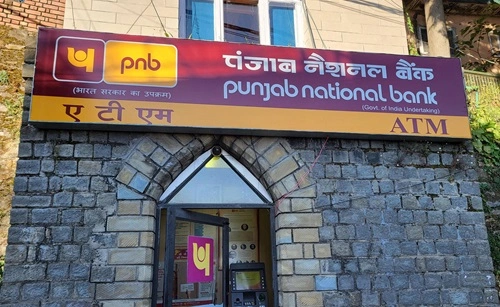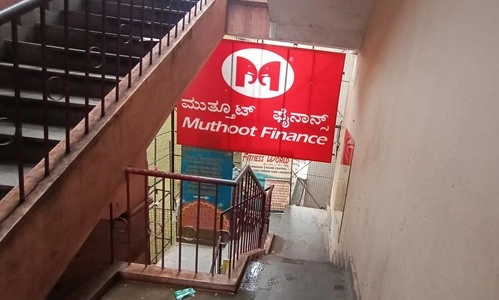Punjab National Bank (PNB) is among India’s largest and most historic public-sector banks, deeply embedded in the country’s financial fabric. As of 2025, it has rebounded strongly under a renewed focus on asset quality, retail growth, and digital adoption — culminating in exceptional profitability. Yet PNB operates in a high-stakes environment, with macro risks, recovery-driven guidance, and competitive headwinds threatening to derail momentum. A detailed SWOT analysis for 2026 helps highlight where PNB’s advantages lie, how it can further strengthen itself, and what challenges it must strategically navigate.
Punjab National Bank (PNB) Overview:

- In Q4 FY25, PNB’s net profit surged 51.7% YoY to ₹4,567 crore.
- For the full fiscal year 2025, it generated a total operating profit of ~₹26,831 crore, up 7.6% YoY.
- Asset Quality Improvements: Gross NPA fell to 3.95% (March 2025) from 5.73% a year earlier. Net NPA declined to 0.40%, and the Provision Coverage Ratio (PCR) rose to 90.27% ex-technical write-offs.
- Capital Strength: CRAR stood at ~17.01% in March 2025 versus 15.97% a year ago.
- Retail / RAM Lending: Retail, agriculture, and MSME (RAM) advances grew strongly: PNB’s RAM book was ~₹6,02,682 crore by March 2025.
- Digital Growth: Digital transactions surged; for FY25, PNB’s UPI activity and digital banking usage saw major annual increases.
- Q2 FY26 Performance: In the quarter ended September 2025, PNB reported ₹4,904 crore net profit, a 14% YoY rise.
- Management Guidance: PNB is targeting 11–12% credit growth, with deposit growth expected around 9–10% in FY26.
Strengths
1. Strong Profitability & Turnaround
The bank’s sharp profit growth in FY25 and Q4 reflects a disciplined turnaround, underpinned by provisioning gains and credit cost control. This gives PNB renewed financial strength and credibility.
2. Improving Asset Quality
The reduction in GNPA from over 5.7% to under 4% is a major achievement. High PCR (especially including technical write-offs) cushions future downside and increases resilience.
3. Healthy Capital Cushion
With CRAR at ~17% and a solid Tier-I base, PNB has the capital to absorb shocks and support credit growth without over-leveraging its balance sheet.
4. Expanding RAM (Retail, Agri & MSME) Portfolio
By boosting advances in housing, MSME, and agriculture, PNB is leveraging priority-sector strength and diversifying risk away from bulk corporate exposures.
5. Digital Momentum
Rapid adoption of UPI, mobile banking and PNB’s digital platforms is enhancing customer reach, reducing operating costs, and improving engagement with younger, digitally-savvy users.
6. Scale & Public-Sector Trust
As one of the major public lenders, PNB benefits from a wide physical footprint, strong institutional relationships, and systemic importance — which can help in mobilising deposits and gaining government-related business.
Weaknesses
1. Net Interest Income (NII) Pressure
Despite profit growth, PNB’s NII growth is being weighed down by higher deposit costs. Its net interest margin (NIM) has been under pressure, which could limit core earnings power.
2. One-time & Exceptional Costs
Q1 FY26 saw a sharp ~48% drop in PAT, partly due to a one-time tax expense.Reliance on non-recurring items to support profitability raises sustainability concerns.
3. Recovery-Driven Guidance
The bank’s future profit growth relies heavily on aggressive recoveries from written-off accounts and stressed loans. While the management aims to reduce GNPA to below 3% by aggressive recoveries, execution risk is high.
4. Cost Base and Operational Efficiency
As a large PSU bank with an extensive branch network, PNB faces legacy cost challenges. Transforming operational efficiency while scaling may be difficult without significant digitisation investment.
Opportunities
1. Credit Growth & Priority Lending
PNB’s management is targeting 11–12% credit growth for FY26, particularly by expanding RAM lending. With India’s strong MSME and agriculture credit needs, PNB can drive high-margin growth.
2. Recovery & NPA Resolution
Successful recovery from write-offs and recovery pools can unlock significant value. Lowering gross NPA to under 3% (management’s stated target) would significantly improve balance-sheet strength.
3. Digital Banking Expansion
Further building its digital infrastructure — mobile banking, AI-enabled lending, UPI push — will help PNB to lower its cost-to-serve, attract younger customers, and cross-sell more retail products.
4. Deposit Mobilisation
With its strong public-sector presence, PNB can increase low-cost liabilities via CASA, government schemes, payroll accounts, and digital banking outreach — reducing its dependence on expensive bulk deposits.
5. Partnerships & Co-lending
Collaborations with fintechs, NBFCs, and government programs (Green finance, MSME credit) can support risk-controlled growth and product innovation.
Threats
1. Macro-Economic Risks
Slower growth in agriculture or MSME sectors could stress PNB’s RAM portfolio. A sharper economic slowdown could increase slippages and provisioning needs.
2. Competition from Private Banks & Fintechs
Private sector banks and digital lenders continue to aggressively target retail and MSME customers. PNB must defend pricing, customer experience, and digital acquisition to stay competitive.
3. Regulatory & Provisioning Risks
Any unfavorable regulatory change — higher provisioning norms, stricter capital requirements — could raise costs. Recovery expectations may not materialize, particularly in deeply written-off book segments.
4. Operational & Cyber Risk
As PNB expands its digital footprint, it will face cybersecurity, fraud and operational risks. Legacy systems may struggle with scale or modernization.
5. Funding Cost Volatility
With rising interest rates or deposit competition, maintaining or growing its low-cost deposit mix could become challenging, which would compress margins.
Conclusion
Punjab National Bank enters 2026 riding strong momentum: profit sharply up, NPAs coming down, and a credible roadmap for growth through RAM segments and digital adoption. Its capital strength, recovery ambitions, and systemic importance give it the firepower to lead in the PSU space.
However, sustaining this turnaround will demand execution excellence — especially in loan recoveries, cost control, and digital scaling. The biggest risk lies not just in macro headwinds but also in overly optimistic recovery expectations. If PNB delivers on its recovery targets while continuing to grow credit and low-cost deposits, the bank can solidify its position as a modern, profitable, and lower-risk public-sector powerhouse. If it falters, its progress may prove fragile.


